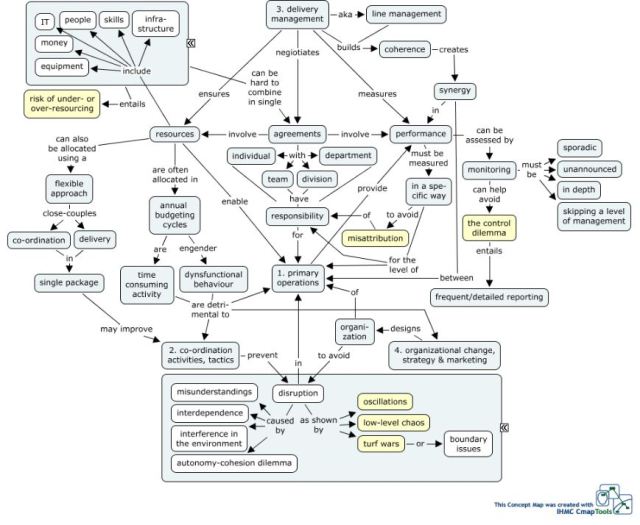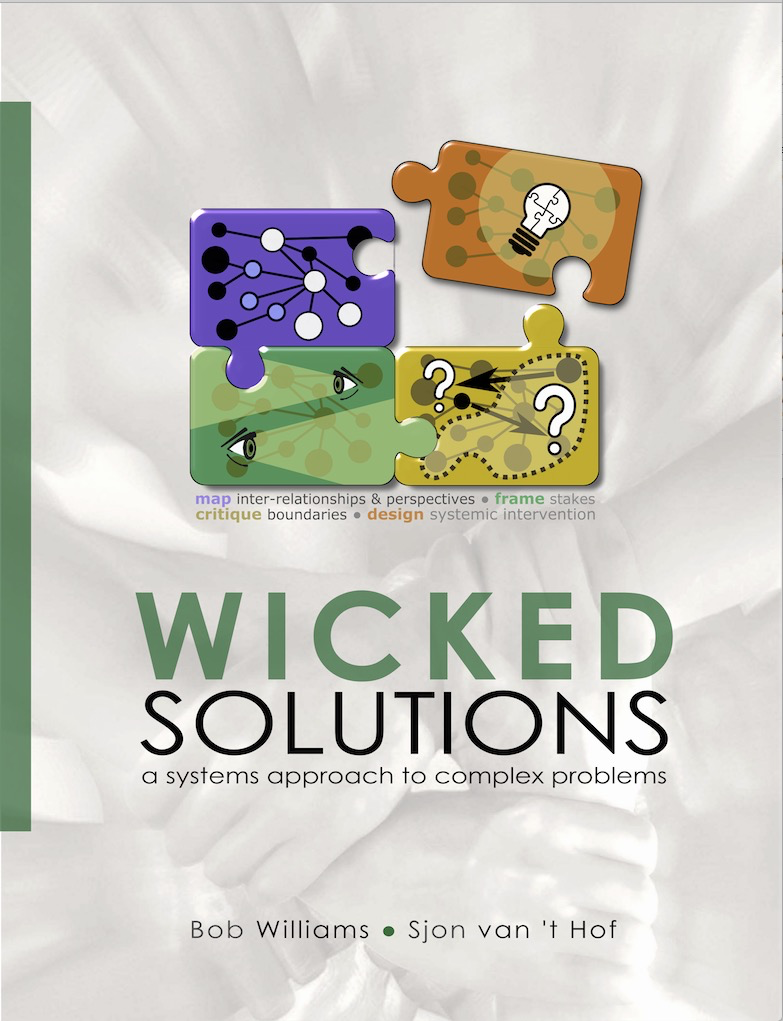The heart of below concept map is formed by the diamond in the middle. Subsystem 3 is concerned with delivery management, i.e. the task of making sure that the primary operations can be carried out without disruption. This is the lowest level of management and is basically about tweeking the organization to run smoothly by good co-ordination, building coherence, and creating cohesion and synergy between operations. Disruption can take many forms, e.g. oscillations in performance, low-level chaos, and turf wars between operations or departments.
 These can be caused by misunderstandings, interdependence among activities, interference in the environment, and autonomy-cohesion issues. Subsystem 4, which is about strategy and organizational change, must ensure that the organization is designed in such a way that structural disruption problems are prevented, leaving only a manageable residue that can be handled by subsystem 3.
These can be caused by misunderstandings, interdependence among activities, interference in the environment, and autonomy-cohesion issues. Subsystem 4, which is about strategy and organizational change, must ensure that the organization is designed in such a way that structural disruption problems are prevented, leaving only a manageable residue that can be handled by subsystem 3.
Another key role of subsystem 3 is to provide resources for the operations on condition that these operations achieve agreed performance objectives. These agreements are concluded with the units (e.g. individuals, teams, departments) that are directly responsible for their primary operations. Resources come in many forms: equipment, money, people, IT, skills, infrastructure. The responsibility for these resources is often distributed across various departments : human resources, finance, IT. This runs the risk of under- or over-resourcing. Since these resources are not infinite, some form of negotiation is needed to distribute the resources fairly across the operations. The level of performance is also taken into consideration in the agreements.
Some form of measurement is needed as feedback on the actual level of performance. This feedback can be used in various ways, e.g. for the next budgeting cycle, to adjust the desired performance level, to identify the causes of deviations in performance, or to place responsibility with those in charge of certain operations. Since performance is the outcome of a complex interplay of many factors, its measurement with a view to attribute responsibility can be very difficult. Care should be taken that measurement is specified for the level of operation concerned. An efficient alternative to frequent and detailed reporting is monitoring. For it to be effective it needs to be sporadic, unannounced, in depth, and skipping a full level of management.
The allocation of resources can be done in two ways. The classical approach is that of budgeting cycles. The disadvantage is that it is very time consuming and may encourage dysfunctional behavior, i.e. tricks to expand the budget or avoid control. A more flexible approach to allocating resources is by bringing the co-ordination and delivery of an operation into a single package deal. An example is the introduction of group engineering or cellular manufacturing, which often improved performance by 50%.
This is the second of several posts on VSM in this blog, the first being The Viable System Model. They are based on Chapter 3 of Systems approaches to managing change : a practical guide. It is by far the most complex chapter in the book. It was written by Patrick Hoverstadt, who also wrote The fractal organization.

